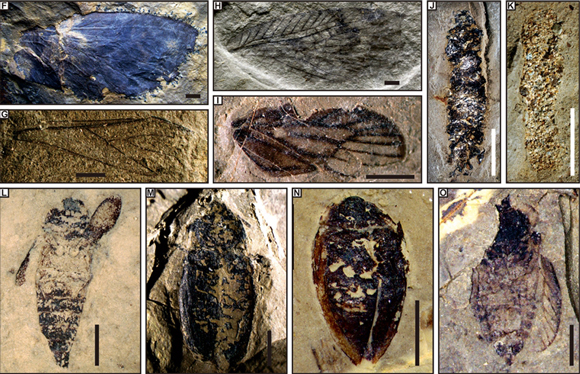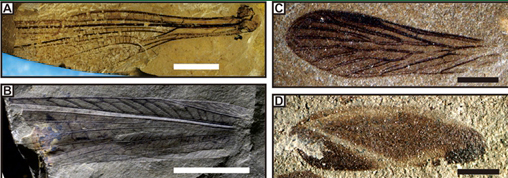Chinese Fossils Show How Insects Came to Rule the World
A lot of work has been carried out by scientists to try to understand how marine and terrestrial ecosystems recovered after the End Permian extinction event that wiped out some 95% of all life on Earth.
The focus has been largely orientated towards how the vertebrates recovered, the rise of the dinosaurs, for example. However, relatively little research has been undertaken to examine how insects recovered and diversified over the Triassic. One of the main reasons for this, has been the lack of insect fossils from the Lower and Middle Triassic to study.
Chinese Fossils
A scientific paper that details the amazing fossil discoveries from two locations in China, is helping to change this and plug a gap in our understanding about the evolution and radiation of the most specious group of animals on Earth.
A Treasure Trove of Insect Fossils from China Reflect the Rapid Diversity of the Insect Fauna
Picture credit: Zheng at al
Writing in the academic journal “Science Advances”, a joint Chinese/UK-based team of scientists have reported on the hundreds of insect fossils excavated from two sites in north-western China. The researchers have discovered the earliest known fossils of several modern insect groups and also provided new insights into the early evolution of freshwater ecosystems.
New Evidence for Understanding the Process of Insect Diversification
The researchers which included scientists from the Nanjing Institute of Geology and Palaeontology, part of the Chinese Academy of Sciences, excavated two sites, one dating from the late Ladinian faunal stage (Tongchuan entomofauna), dated to around 238-237 million years ago. The second location represents slightly younger deposits, dating from the Carnian faunal stage (Karamay entomofauna).
The Tongchuan entomofauna was found to consist of at least twenty-eight insect families representing eleven orders, making it the most specious and diverse of all the Triassic deposits where insect fossils have been discovered. The Karamay entomofauna consisted of ten insect families in six orders, including the earliest known examples of water boatmen and caddisfly cases. The discovery of water boatmen insect fossils in strata dating from the Carnian faunal stage, is the earliest record of aquatic insects. These fossils suggest that many of the modern insect ecosystems were in place around 230 million years ago, far earlier than previously thought.
The Insect Fossils from North-western China Reveal a Diverse and Modern Insect Population
Picture credit: Zheng at al
Diversification of Insects (Aquatic Insects)
The researchers conclude that the hundreds of insect fossils indicate that a modern insect biota was established earlier in the Mesozoic than previously thought. In addition, the diversification of aquatic insects had been thought to be part of the “Mesozoic Lacustrine Revolution”, which dates to the Middle Mesozoic. This study suggests, however, that this diversification had already begun by the Middle Triassic, thus providing new insights into the early evolution of freshwater ecosystems.
The research team, which included a contributor based at the London Natural History Museum, conclude that over the period of the Early Triassic a number of new types of plants evolved and spread and the evolution of vegetation very probably contributed to the radiation and diversification of insect faunas.
A Beautifully Preserved Wing from a Planthopper Insect (Tongchuan Entomofauna)

Picture credit: Zheng et al
Visit the Everything Dinosaur website: Everything Dinosaur.








Leave A Comment